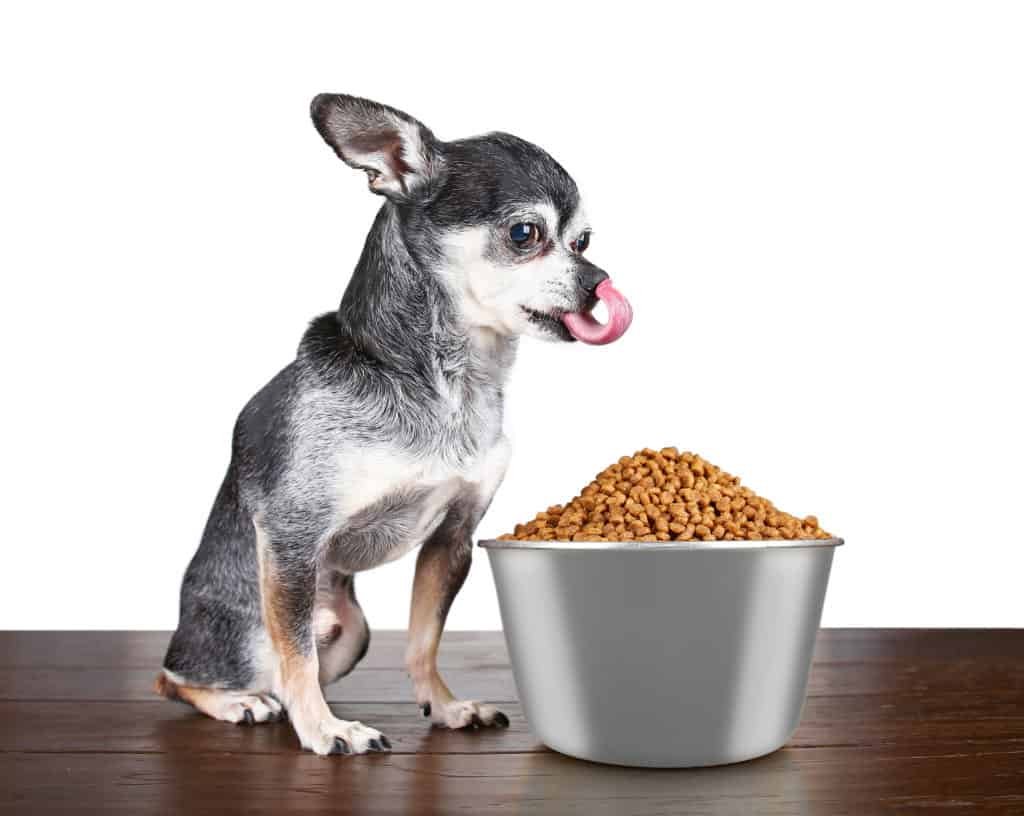
Teacup puppies require a well balanced diet, as this is the foundation for good health. Though should be put into exactly which type of food you will feed your pup. While you choice will most likely differ from that which the puppy has been eating since transitioning to solid food, you will want to have both the ‘old’ food and the ‘new’ food on hand. This is because a fast changeover can cause upset stomach problems and other issues.
It is recommended to mix the two foods and over the course of 3 to 4 weeks, make a gradual change to the one of your choosing.
Teacup puppies up until the age of 3 months old should be free-fed. This is the method of leaving out fresh food at all times. This helps to prevent the puppy from going too long without sustenance which can cause a dangerous drop in blood sugar levels or call it hypoglycemia.
You may need to remind a young puppy where his food and water dishes are for the first few weeks.
Once a Poodle reaches the 12 week mark, you will want to start giving him scheduled meals 3 times per day. A Yorkie puppy will not eat very much and it really is best to spread the food out from morning til evening. You can also give some small snacks, but it is recommended to reserve these as rewards for housebreaking since they will mean more if the puppy is hungry for it. You may wish to read more in the feeding section.
Know how to feed your dogs, this is very important
Continue reading below:…..
So, how much food should a Teacup eat per day?
This feisty little dog is full of energy, so it should be getting the right amount of calories. Knowledge of how many times per day to feed your furry friend will also be helpful. Remember that fresh water should be available at all times.
It is also important to feed your Poodle a food that he enjoys. Dogs that refuse food can become hypoglycemic, and it is necessary to keep blood sugar levels consistent.
Although each dog is an individual and feeding amounts may vary, 1/4 to 1/2 cup of dry food daily is the recommendation for Poodle puppies. They should be eating three to four times per day, according to Petcha.
Until they reach 4 months, food should be available at all times for the very young puppy; after 4 months a feeding schedule can be established.
For the puppy under 3 months old, leaving food available helps prevent hypoglycemia.
Your dog is growing quickly and should be fed a high-quality food, according to AKC, to enhance muscle and bone development.
Although dry food is a better choice for your puppy, you can feed him a small amount of wet food as well.
The Poodle puppy should be started out on a dry food which contains the most nutrients. Additionally, dry food helps control tartar and keeps the teeth healthier.
After 3 or 4 months, the meals are more scheduled. Some Poodle parents feed their dog in the morning, lunchtime and early evening. If another meal is scheduled, it should be in the evening.
Breakfast should be the largest meal of the day, and dinner can be the lightest. Do not give your little friend food later than two hours before his bedtime.
Throughout the day, snacks can be given as a reward for good behavior.
After 4 months, an eating schedule should be established. It will make training him much easier. Eating regularly is a step in training your Poodle’s behavior.
Introducing the puppy to its new OwnerShipping
Puppy Gear
Here’s what you need for a good start with your new pup: Medical History… All of the pets previous medical records, if any. Identification… We recommend both a Microchip ID and a TAG. Nutritious Food… We recommend a top quality PUPPY food such as Royal Canine. Puppy food is fed until your pet is about 12 months old. Between 12-18 months of age, the pet should be switched to adult dog food. Food and Water Bowls… That can be sanitized easily. Shipping Crate… For transportation and/or for a bed. (Ask us about the one we offer at a discounted rate)
A harness, leash, and chewing toys.
Diet Changes
Drinking
Rest
The Breeder
Diet
Socialization
Veterinarian Care
You can edit text on your website by double clicking on a text box on your website. Alternatively, when you select a text box a settings menu will appear. your website by double clicking on a text box on your website. Alternatively, when you select a text box
You can edit text on your website by double clicking on a text box on your website. Alternatively, when you select a text box a settings menu will appear. your website by double clicking on a text box on your website. Alternatively, when you select a text box
